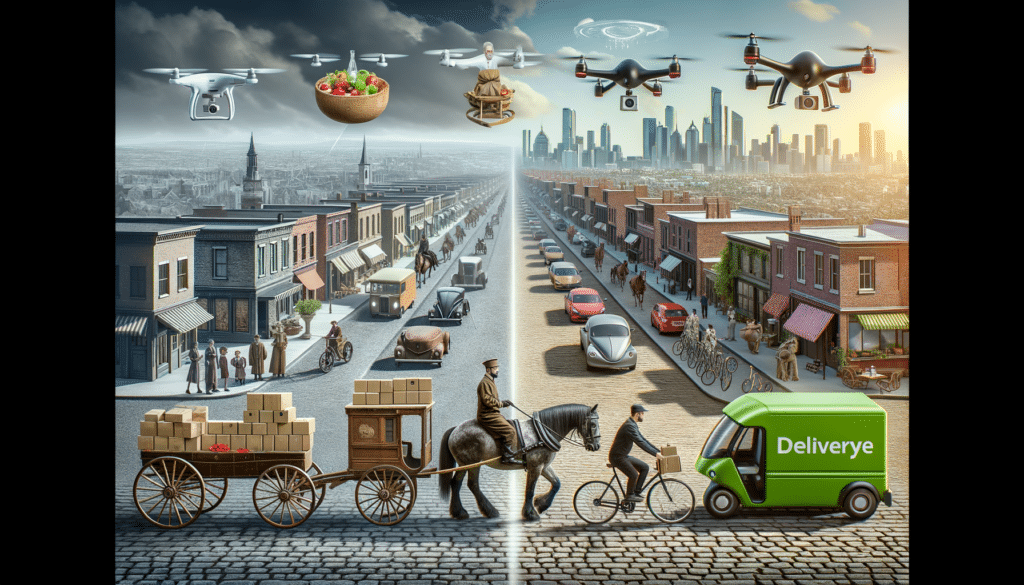The Rise of Food Delivery Services
Food delivery services have seen a remarkable rise over the past decade, transforming from a luxury to a staple in daily life for many. The convenience of having meals delivered directly to one’s doorstep has become an integral part of modern living. This surge in popularity can be attributed to advancements in technology, shifts in consumer behavior, and the increasing pace of life. As smartphones became ubiquitous, so did the apps that facilitate food delivery, offering a wide array of choices at the tap of a screen.
The global food delivery market has grown exponentially, driven by the demand for convenience and variety. According to recent reports, the market is expected to reach a value of over $150 billion by 2024. This growth is fueled by the increasing number of dual-income households, urbanization, and the desire for diverse culinary experiences without leaving home. The COVID-19 pandemic further accelerated this trend, as lockdowns and social distancing measures made dining out less feasible.
Food delivery services have also adapted to meet changing consumer preferences, offering healthier options, meal kits, and even gourmet meals. This adaptability has not only sustained their growth but also expanded their customer base. In essence, food delivery services have become a vital part of the food industry, reshaping how we think about dining and convenience.
Technology’s Role in Revolutionizing Food Delivery
Technology has been a driving force behind the evolution of food delivery services. From the development of user-friendly apps to sophisticated logistics algorithms, technology has made food delivery more efficient and accessible. The use of GPS technology allows for real-time tracking of orders, ensuring that customers are informed every step of the way. This transparency builds trust and enhances the customer experience.
Additionally, artificial intelligence and machine learning have been employed to optimize delivery routes, predict demand, and personalize customer recommendations. These technologies help reduce delivery times and improve service efficiency, making food delivery a seamless experience. Moreover, the integration of digital payment systems has simplified transactions, further contributing to the convenience factor.
As technology continues to advance, the future of food delivery looks promising. Innovations such as drone deliveries and autonomous vehicles are being explored, potentially revolutionizing the industry once again. These advancements could lead to faster delivery times, reduced costs, and even more convenience for consumers.
The Impact on the Restaurant Industry
The rise of food delivery services has had a profound impact on the restaurant industry. While some establishments have embraced this trend, others have struggled to adapt. For many restaurants, partnering with delivery platforms has become essential to reaching a wider audience and increasing revenue. This shift has led to the emergence of “ghost kitchens,” which operate solely for delivery purposes without a physical dining space.
However, the reliance on third-party delivery services has also raised concerns. High commission fees and the loss of direct customer interaction are challenges that some restaurants face. To mitigate these issues, some establishments are developing their own delivery systems or negotiating better terms with existing platforms.
Despite these challenges, food delivery services have provided opportunities for growth and innovation. Restaurants can now reach customers beyond their immediate vicinity, offering promotional deals and exclusive menu items to attract new patrons. This dynamic has reshaped the competitive landscape of the restaurant industry, encouraging creativity and adaptation.
Consumer Behavior and Preferences
Consumer behavior has significantly influenced the food delivery market. The desire for convenience, variety, and time-saving solutions has driven the demand for these services. Busy lifestyles and the need for quick meal solutions have made food delivery an attractive option for many.
Moreover, consumer preferences have shifted towards healthier and more sustainable options. Food delivery services have responded by offering a wider range of choices, including organic, vegan, and locally sourced meals. This trend reflects a growing awareness of health and environmental issues among consumers.
With the rise of social media, food delivery has also become a way for consumers to share their culinary experiences. Platforms like Instagram and TikTok have popularized food trends, influencing consumer choices and driving demand for specific cuisines or dishes.
Future Trends in Food Delivery
The future of food delivery is poised for continued growth and innovation. As technology advances, we can expect to see new trends and developments in the industry. One potential trend is the increased use of artificial intelligence to further personalize the customer experience, offering tailored recommendations based on past orders and preferences.
Sustainability is another area of focus, with companies exploring eco-friendly packaging and delivery methods to reduce their environmental impact. This shift aligns with consumer demand for more sustainable practices and reflects a broader trend towards environmental consciousness.
Additionally, the integration of virtual reality and augmented reality could enhance the food delivery experience, allowing customers to explore menus and restaurant atmospheres from the comfort of their homes. As these technologies become more accessible, they have the potential to transform the way we interact with food delivery services.





